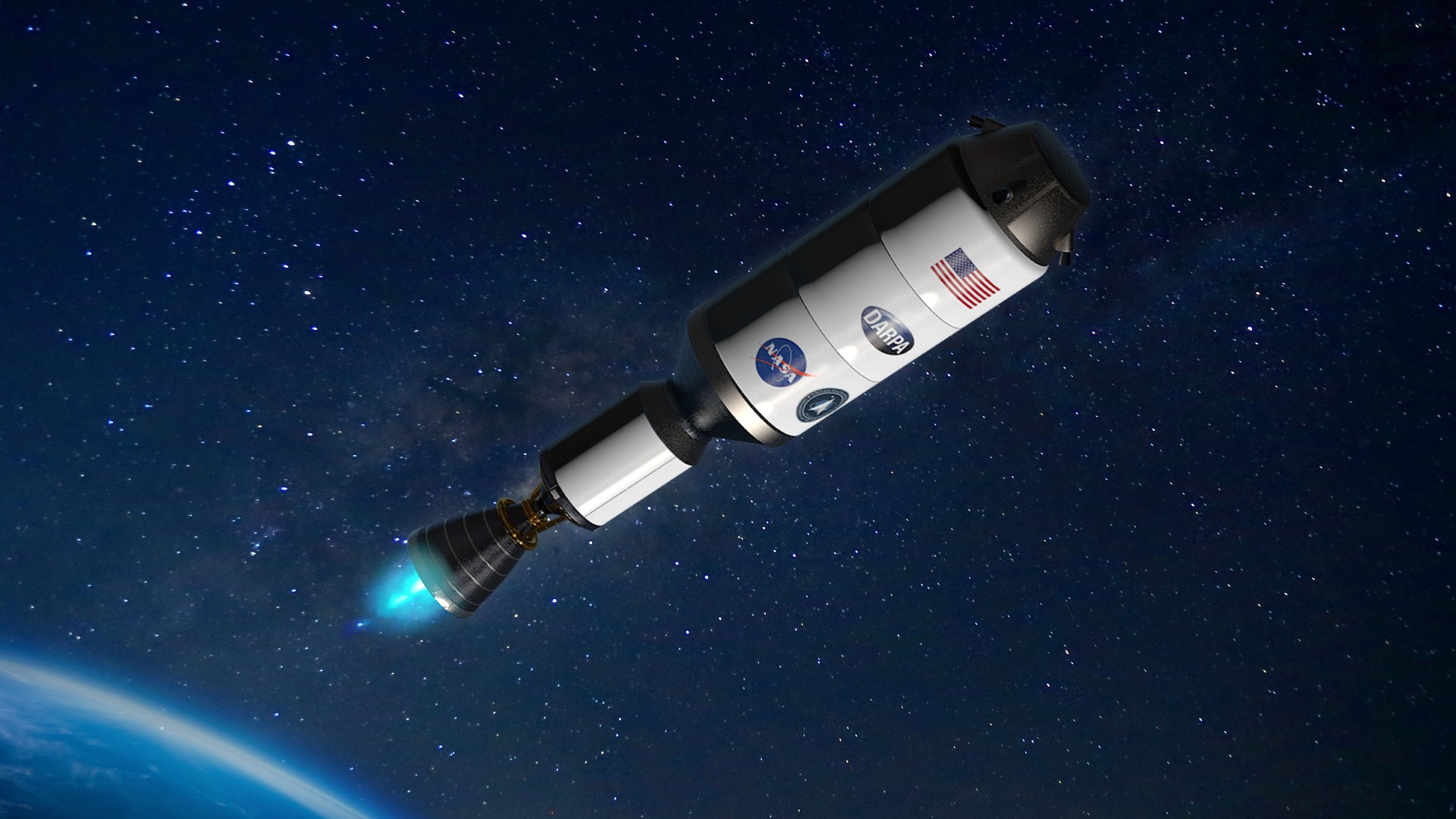
NASA and the U.S. military plan to launch a nuclear-powered spacecraft to Earth orbit in late 2025 or early 2026.
The project, known as DRACO ("Demonstration Rocket for Agile Cislunar Operations"), aims to give an in-space test to nuclear thermal propulsion (NTP), potentially revolutionary tech that could help humanity set up shop on Mars and other distant worlds.
The DRACO spacecraft will be developed and built by Lockheed Martin, project team members announced today (July 26).
"We're going to put this together, we're going to fly this demonstration, gather a bunch of great data and really, we believe, usher in a new age for the United States [and] for humankind, to support our space exploration mission," Kirk Shireman, vice president of Lockheed Martin Lunar Exploration Campaigns, said during a press conference today.
Related: US military wants nuclear rocket ideas for missions near the moon
DRACO isn't new. The U.S. Defense Advanced Research Projects Agency (DARPA) started the program in 2021, and NASA came aboard in early 2023.
NASA's involvement shouldn't be surprising; the agency's interest in NTP tech goes way back. For example, NASA aimed to launch a crewed Mars mission aboard a nuclear-powered spacecraft by 1979, via a program called NERVA ("Nuclear Engine for Rocket Vehicle Application"). This didn't happen, of course; NERVA was canceled in 1972.
NASA is still shooting for the Red Planet, aiming to get astronauts there by the late 2030s or early 2040s. And it still views nuclear thermal propulsion as a key breakthrough that could make this goal more attainable, by slashing the travel time to and from the Red Planet.
Nuclear thermal rockets carry small fission reactors, which release incredible amounts of heat as they split atoms. This heat is then applied to a propellant gas, which expands and is funneled into space through a nozzle to create thrust.
This process is distinct from the one employed by radioisotope thermoelectric generators (RTGs), nuclear tech that has been flying aboard probes since the early days of the space age. RTGs don't provide propulsion; they harness the heat of radioactive decay to generate electricity, which then powers instruments, motors and other spacecraft gear.
In previous DRACO updates, DARPA and NASA have said they aim to launch the program's first in-space demonstration by 2027. But that timetable may have moved up; Shireman said in today's briefing that the target launch window at the moment is late 2025 or early 2026.
We got other details today as well. For example, Lockheed is partnering with the Virginia-based company BWX Technologies, which will develop the DRACO spacecraft's nuclear reactor and produce its HALEU ("high-assay low-enriched uranium") fuel.
The spacecraft will head to a relatively high orbit around Earth — likely somewhere between 435 and 1,240 miles (700 to 2,000 kilometers), team members said during today's briefing. From such altitudes, it will take at least 300 years for the DRACO demonstrator to fall back to Earth via atmospheric drag — long enough to ensure that all of its nuclear fuel is spent when it comes down.
The mission team will take pains to ensure safety on the way up as well: The DRACO vehicle's nuclear engine will only be activated once it reaches orbit. During launch, the engine will be equipped with a "poison wire," a piece of metal that absorbs neutrons, preventing them from initiating a chain reaction. The poison wire acts much as control rods do in nuclear power reactors here on Earth, team members said.
DRACO is expected to operate in orbit for a few months. There are no scientific instruments going up; "operation" entails the use of its NTP engine, demonstrating that it can work for long stretches in the space environment.
Use of that engine, however, will also require keeping DRACO's hydrogen — the spacecraft will launch with about 4,400 pounds (2,000 kilograms) of the stuff — super-cold, which is no mean feat.
"Our life-limiting factor is how long we can keep the hydrogen cryogenic," Tabitha Dodson, DRACO program manager at DARPA, said during today's briefing. "This is just as much a demonstration of on-orbit storage of cryogenic liquid hydrogen as it is a demo of the nuclear thermal rocket engine."
Dotson added that, while the spacecraft's specifications are still being worked out, it will basically consist of the NTP engine system and a big tank to hold the hydrogen. (She likened it to "a flying test stand.") And the vehicle won't require a heavy-lift rocket; it will be small enough to fit inside the fairing of a "standard" launcher like SpaceX's Falcon 9.
We also got information about the project's cost. The contracts awarded to Lockheed and BWX Technologies for their DRACO work have a total value of $499 million, provided all milestones are reached, Dotson said. Half of the money will come from DARPA and half from NASA, she added.







